The DeepCool Captain 240 EX RGB AIO Cooler Review: Pump it Up, Without the Noise
by E. Fylladitakis on December 14, 2017 9:00 AM EST- Posted in
- Cases/Cooling/PSUs
- AIO
- Deepcool
- Cooler
The DEEPCOOL Captain EX 240 RGB Cooler
The DEEPCOOL Captain EX 240 RGB is a classic CPU-only AIO cooler design, with the CPU block assembly attached to the radiator via two hoses. The CPU block assembly includes the CPU contact plate, the pump, RGB LED lighting, and the speed control electronics. All of the parts are black. The tubing is thick and has a nylon braiding surrounding it. It is not very flexible but it certainly is very tough. DEEPCOOL has the tubing entering the CPU block assembly from the side, using 90° joints.
The radiator of the kit is a typical two-pass design, very similar to that used by almost every 2×120 mm fans AIO kit in the market. It is 275 mm long, 120 mm wide and 27 mm thick (10.83 × 4.73 × 1.1 inches). Its narrow dimensions suggest that a push-pull fan configuration will not provide reasonable performance benefits, as it has little airflow impedance to begin with. The design is common and that is not a bad thing, as it is proven to provide relatively good performance. Interestingly, it has a visible refill port but DEEPCOOL has sealed it.
The highlight of this cooler is the CPU block. It is almost cubic in shape, with the company logo etched on the sides of the assembly and a decorative fin circular array on the top. DEEPCOOL has designed it so as to make the liquid flow visible to the user via a clear plastic tube that comes out of the assembly’s center and goes back in from the side. The downside is that it has two wires, one power wire for the pump and one for the RGB LEDs. The wire for the RGB LEDs need to be connected to the bundled cable with the attached controller for the RGB LEDs to work, requiring a SATA power connector and skillful cable routing to hide everything.
The RGB lighting of the Captain EX 240 RGB is somewhat limiting, as the user can only choose from seven solid colors (red, blue, green, magenta, cyan, orange, and white), or from a couple of basic pre-programmed visual effects. Unfortunately, the included controller is unable to generate any other configuration. However, it can be replaced by a more advanced aftermarket controller or be connected directly to a header of a motherboard that offers onboard RGB strip support, as both the included strip and the integrated LEDs are typical 4-pin RGB products.
The square copper contact base of the Captain EX 240 RGB is attached to the main body of the cooler via large and visible Allen bolts. It comes with the thermal compound pre-applied and is polished to a very smooth, yet not a mirror finish. The DEEPCOOL Captain EX 240 RGB supports AMD AM4 but not TR4 CPUs.


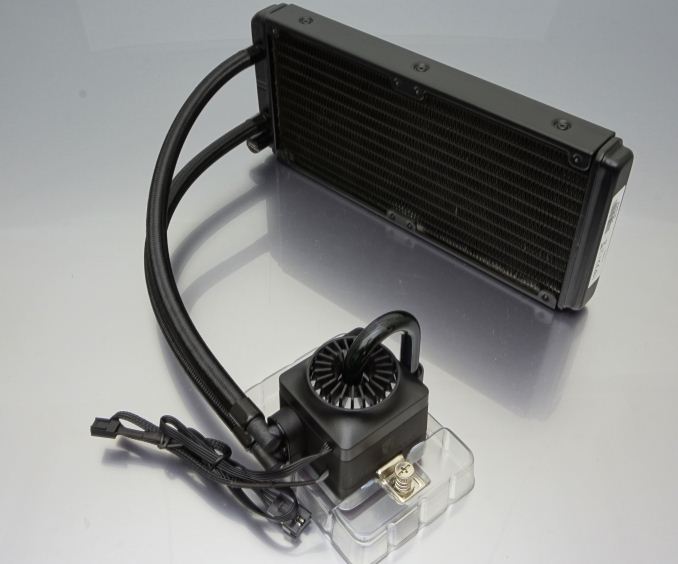
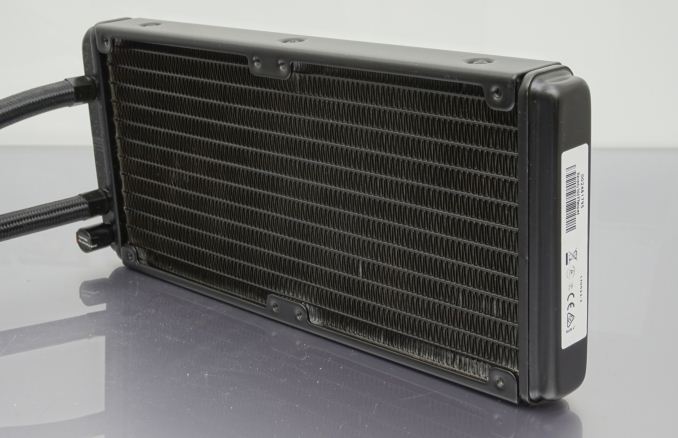
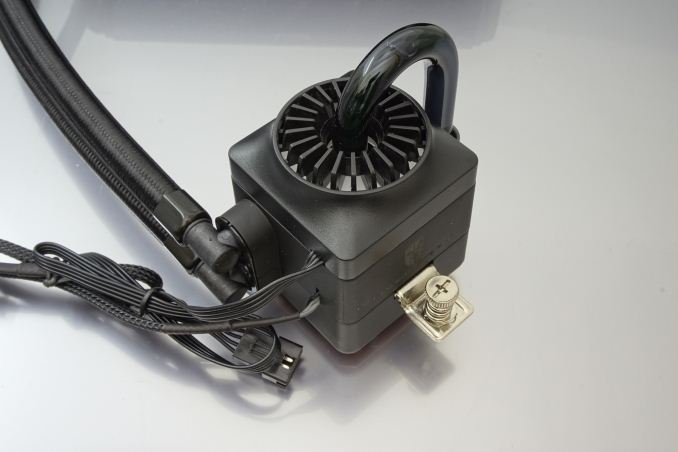
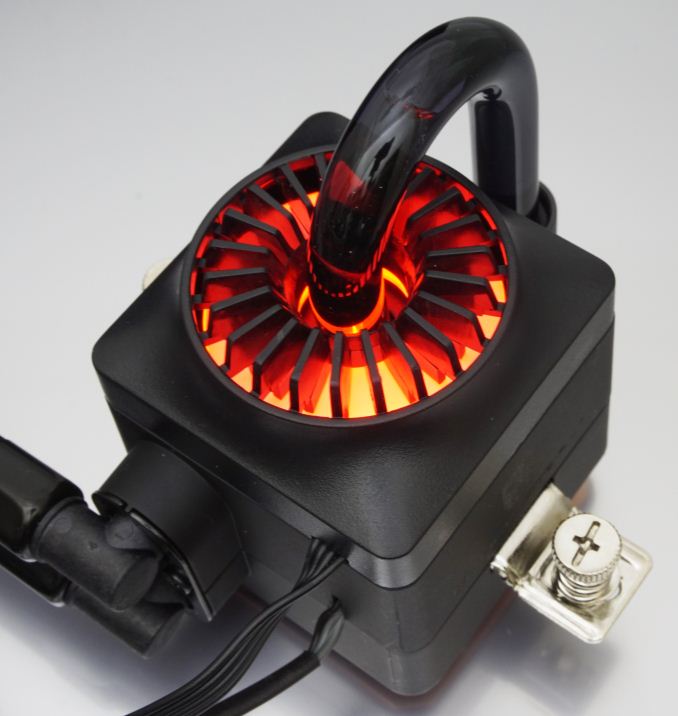

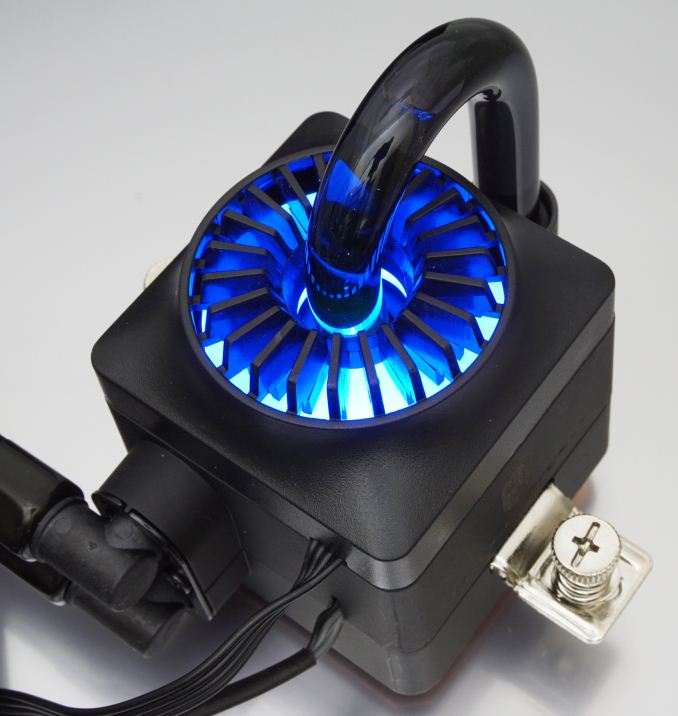

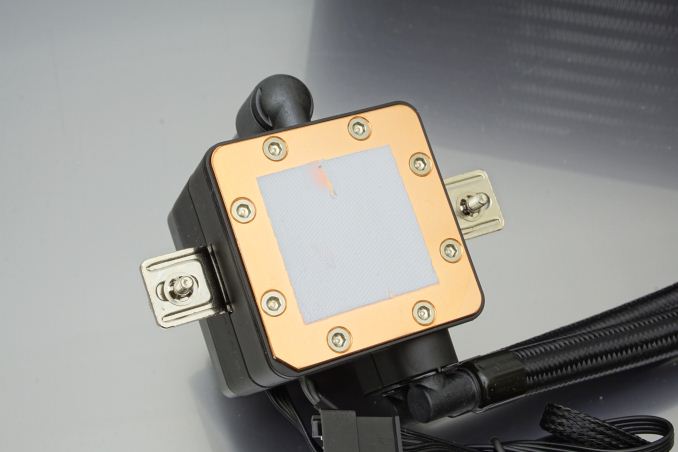








34 Comments
View All Comments
IdBuRnS - Wednesday, January 3, 2018 - link
You don't think your readers want to know if a cheaper and more standard fan/heatsink cooler works better than one of these bulky AIO units? Seriously?Stuka87 - Monday, December 18, 2017 - link
I have never used an air cooler that can work as well as an AIO cooler. Sure it would be nice to see them compared, but a liquid cooler can handle a MUCH higher load than a heatsink and fan can. And I have used the same CPUs with both style coolers. I end up with a MUCH cooler and quieter setup with the AIO cooler.ellis.bentley - Tuesday, January 9, 2018 - link
Great post you have shared with everyone. We can get valuable knowledge from this site. Thanks for sharing this informative stuff with us. https://stjohnsrcschool.org/apps-for-pc/imessage-o...https://stjohnsrcschool.org/apk/uktvnow-apk/
DanNeely - Thursday, December 14, 2017 - link
"The RGB strip is a welcome addition that surely every user with a windowed side panel will appreciate."The only part about the RGB Cancer Strip that I'd appreciate if I owned this is that it's not hard wired in, meaning that chemotherapy will only consist of tossing the strip in my to recycle box and not require voiding the warranty or having some piece of garbage grade software run at startup to turn them off each time I boot my system.
The_Assimilator - Thursday, December 14, 2017 - link
Amen brother!bananaforscale - Wednesday, June 20, 2018 - link
There's a non-RGB model that glows white.rocky12345 - Thursday, December 14, 2017 - link
Great write up & lots of info on the product but I have to ask this. When doing a test of a cooler and only giving the Delta type stats like here & GN does the same thing & I also said this to them as well.What is the point of doing a cooler temp test if we do not get the actual temps of the cooler under the tested work loads? Doing a Delta over ambient means very little if we do not know the ambient temp at the time for each of the testing runs done. I think we also need idle and max temps put into the charts so we know exactly how each cooler does against each other and how hot a CPU will run at each tested work load. I know my own CPU overclocked can go as high as 78c in the stress tests but only reach 56c while gaming.
Yuriman - Thursday, December 14, 2017 - link
It makes a lot more sense to give delta temps. Let's say delta is 50c, you could have an ambient of 10c and a load temp of 60c, or an ambient of 30c and a load temp of 80c. Both are equivalent, and show the cooler being able to reduce temps from a given heat source to 50c above ambient. Why would you want to know the actual load temp and ambient?rocky12345 - Saturday, December 16, 2017 - link
I think it would be nice to have both sets of data to be included in the results as well as it clearly stating the ambient temp posted for each of the tests. This way everyone gets to see all the info they need. Personally I also like to see actual CPU's being tested so it puts actual models of cpu's tested and each of them well behave with each cooler. With how companies like how Intel use cheap paste under the lid and if you want to get the best temps you need to delid a Intel cpu to get better results testing on a heat block does not really show how todays Intel cpu's will behave with a cooler.Well that is if you do not do the delid of coarse.With my own CPU which is a Sandy bridge soldered heat spreader i7 2700K I know how it will behave with any given cooler tested because of it's better build quality than their newer stuff. I know with my cooling setup which is air cooler that when I had it in the basement @ 19c room temp it does 5.0GHz-5.1GHz and stays at pretty good temps under normal work & gaming loads.
I have since moved that system upstairs and room temp is 21c-22c it will do 4.9GHz-5GHz because the temp went up a bit under normal work and gaming loads by a few degrees. Not enough that it became unstable or over heating but just enough to make me uneasy since it would hit 84c-87c in the stress testers I use to test if it's stable and as to how warm it gets under those stress tests.
I want to switch to a big rad water cooling setup soon which is why I read or watch reviews for this now. By not showing actual temps with real cpu tested data it makes it almost useless for me to use this data to help me make my buying plans on which ever water cooler is the best. As you said it does give a delta temp over ambient and that you can suck the info from that to give a idea of how coolers will react to a given amount of wattage and heat they need to be able to remove to keep things chill.
The testing done here is done very well but it only paints part of the picture and needs the data I said needed to be added to make it more useful to everyone.
abufrejoval - Thursday, December 14, 2017 - link
You have done a great job to eliminate “randomness” from your results, creating a testbed that allows for reproducible “objective” results.But I wonder if that is entirely a good thing, because in practice these things *will* be running on CPUs, that are more dynamic in terms of heat generation with every generation: Just imagine the engineers finally come up with a non-volatile CPU design and energy consumption jumps between 0 and 200 Watts in microseconds.
Because humans used to be hunted (and hunt), our brain is designed to filter out constant noises, but be especially sensitive to *changes* in sound. So, if your aim is to hide the sound your PC produces, as independently from the current workload, you need to design not necessarily for the lowest absolute noise for any workload, but for *unnoticeability*.
The general problem is, that a jump between 10 and 800 Watts between in ideal idle desktop and a maxed-out gamer rig probably takes attaching a submarine (submerged) to cool without any noticeable acoustic signature: As you eliminate all moving parts you find that there are non-moving parts that are in fact creating sound as well, when having to deal with these power deltas. And I guess the ultimate way to counter these is going active, using noise cancellation techniques.
Now all that is probably excessive, but what I would recommend you to test is to see how these cooling rigs react to dynamic changes of the heat-supply: If their sound profile remains very steady under dynamic workloads, they may be far more acceptable than if they make frequent tiny adjustments even at very low absolute levels. That’s because our brain is tuned to amplify the changes and tune out the steady drones.